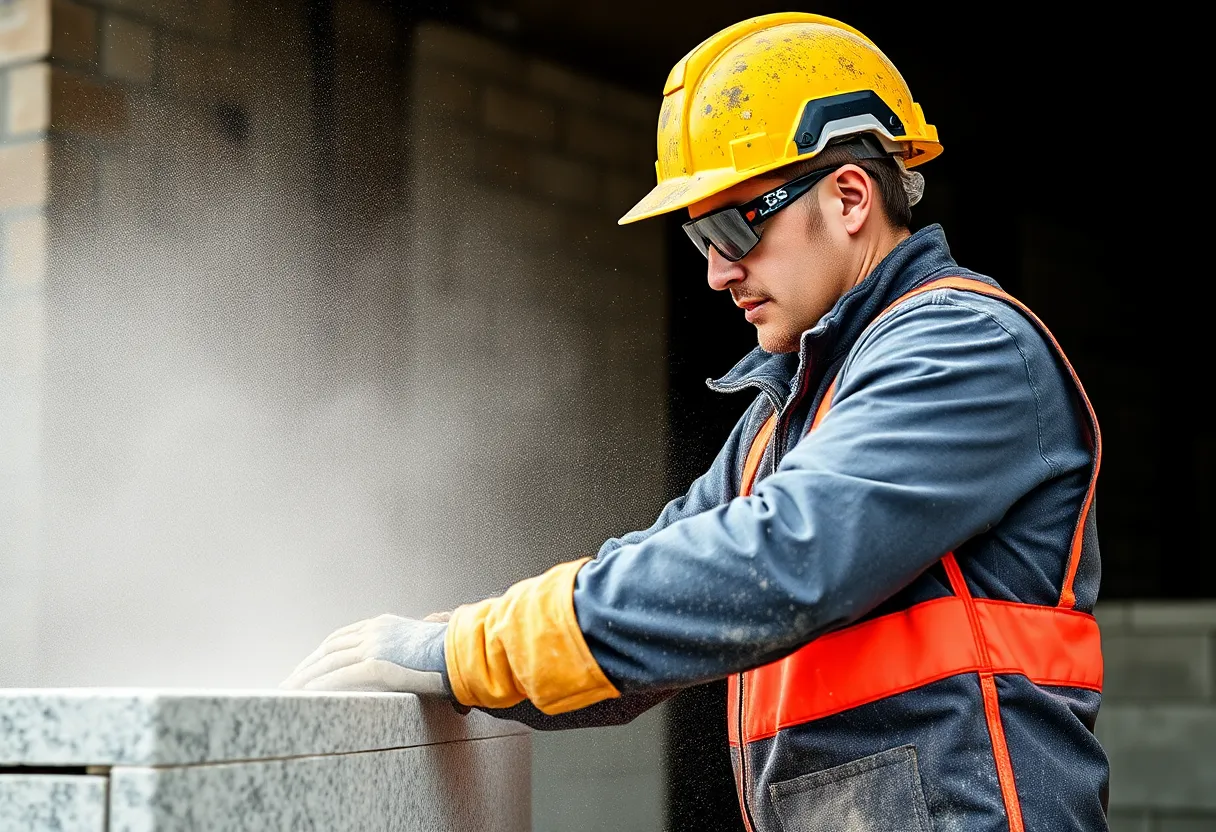News Summary
With increasing awareness and regulatory pressure, silicosis cases in industries like construction and stone fabrication are accelerating, necessitating urgent action.
The Looming Threat: Silicosis Claims on the Rise
As media coverage ramps up, a concerning trend is emerging that suggests a potential epidemic of silicosis, an occupational lung disease that is gradually gaining the attention it deserves. With increasing enforcement actions from regulatory bodies, particularly the Health and Safety Executive (HSE), there is mounting pressure on industries to address this looming health crisis.
The Implications of Silicosis
Silicosis, caused by inhaling respirable crystalline silica dust, presents a severe risk to employees in various industries such as construction, mining, and glass manufacturing. Crystalline silica is a common component found in materials like stone, sands, clays, and more notably, engineered stone. This incurable disease has three distinct forms: chronic, accelerated, and acute. Alarmingly, silicosis can continue to progress even after the exposure has ceased, putting many workers at risk long after their immediate job-related duties have ended.
The Engineered Stone Dilemma
The surge in popularity of engineered stone, especially for kitchen and bathroom countertops, has enhanced exposure risks. This product can contain more than 90% crystalline silica, and between 2010 and 2019, the U.S. witnessed a staggering 700% increase in engineered stone imports. Cutting and polishing these materials can release hazardous levels of silica dust if proper safety measures are not implemented. To combat this rising concern, states such as California have rolled out enhanced safety standards specifically aimed at stone fabrication, particularly within small businesses.
International Perspectives
In Australia, the situation touched a nerve with silicosis—once primarily associated with mining—now emerging among workers in engineered stone fabrication. The material’s excessive use, which surged post-1998, led to poorly regulated environments, thereby amplifying exposure risks. Come June 2024, the ban on engineered stone might change the landscape in Australia, but the challenges remain significant.
The UK: A Cautious Outlook
In the UK, silicosis-related claims currently remain low. There were only 35 applications for Industrial Injury Disablement Benefit in 2023, which is a slight uptick from 30 in 2022. However, industry observers caution that while silicosis could escalate due to increased clinical awareness and reporting, the scale of risk stays substantially lower when viewed against the backdrop of asbestos exposure.
The Call for Vigilance
As talk of silicosis continues to grow, some comparisons to asbestos may seem alarmist. Unlike asbestos, which has a notorious reputation owing to its unique compensation landscape linked to prolonged exposure, silica exposure is preventable through appropriate safety controls like dust extraction systems, wet-cutting techniques, and the use of respiratory protective equipment. The HSE is stepping up its efforts to educate industries about minimizing exposure risks.
Emerging Legal Battles
The rise in silicosis cases has resulted in claimant lawyers actively seeking victims of this disease. High-profile cases among stonemasons and workers engaged in quartz countertop production have led to significant legal warnings about the dangers of silica dust exposure. Lawsuits against manufacturers of quartz countertops claim negligence in failing to alert workers about these risks. Significant financial compensations have been awarded in recent trials as a testament to the dire consequences of these health threats.
Protective Measures and the Future
Steps toward protecting workers include implementing wet sawing techniques, ensuring proper air quality monitoring, and improving ventilation in workplaces heavily involved with silica-based materials. The HSE has emphasized that silica dust ranks as the second most dangerous risk to construction workers after asbestos, with records indicating over 500 construction worker deaths attributed to silica exposure since 2005. The impacts of silica dust can take years to present themselves, complicating both prevention and compensation strategies.
A Call for Action
The growing awareness of silicosis, particularly in sectors like mining and construction, underscores the urgent need for enhanced healthcare access and support structures for affected individuals. As industries brace themselves for potential silicosis claims, vigilance is the order of the day, with a pressing demand for effective risk management practices in high-exposure environments to safeguard the health of workers. The importance of addressing emerging risks associated with silicosis cannot be overstated; education and compliance remain crucial in the fight against this underappreciated threat.
Deeper Dive: News & Info About This Topic
HERE Resources
Radiation Therapy for Mesothelioma Patients
Florida Mesothelioma Advocacy Efforts Intensify Amid Growing Health Concerns
Brake Wear Pollution Outweighs Diesel Exhaust in Lung Damage
The Asbestos Crisis: Corporate Accountability Under Fire
Contractor Sentenced for Exploiting Elderly and Asbestos Safety Violations
Mesothelioma Lawsuit Highlights Asbestos in Talc Products
Asbestos Alarms After Tustin Historic Fire: A Community on Edge
Asbestos Abatement Project brings new life to the Crim Theater
New Research Project in Clydebank Aims to Unravel Mesothelioma
New Support Group in Cwmbran for Mesothelioma and Lung Cancer Patients



















